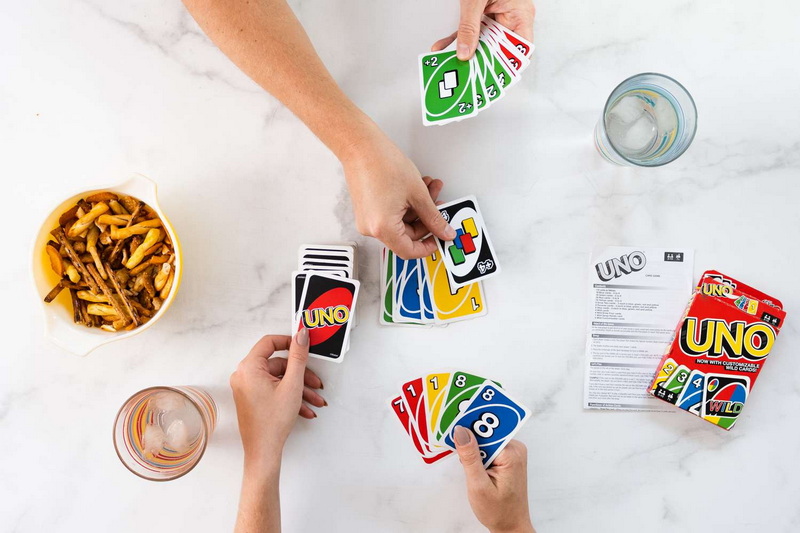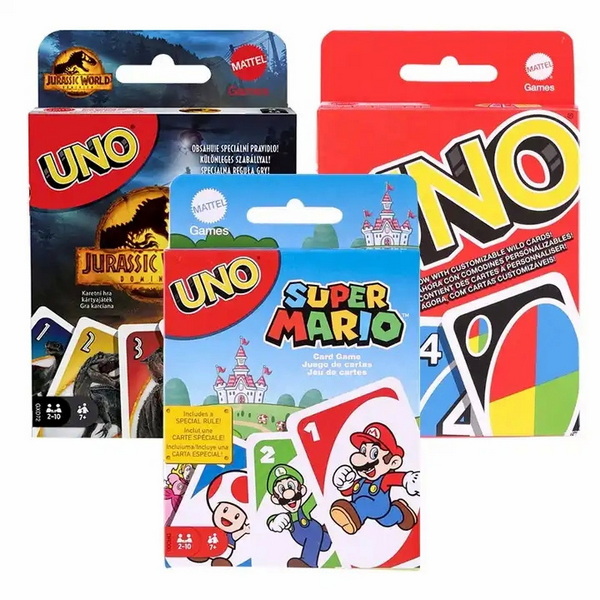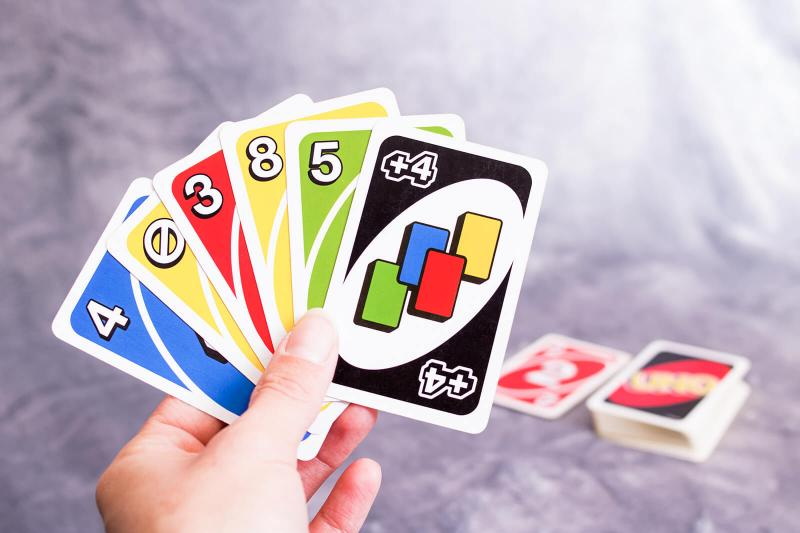Content Menu
● Introduction
● Understanding the Indian Uno Cards Market
● Capabilities to Look For in UNO Cards Manufacturers and Suppliers in India
>> Card stock and finishing
>> Artwork and branding flexibility
>> Private-label and co-branding
>> Packaging and display integration
>> Compliance and safety
>> Production flexibility and lead times
>> Quality assurance and traceability
● How to Vet Potential Partners
>> Define project scope clearly
>> Request physical samples and digital proofs
>> Assess factory capabilities and certifications
>> Review logistics readiness
>> Seek references and case studies
● OEM and Private-Label Opportunities
● Production and Quality Assurance Details
● Sustainability and Responsible Manufacturing
● Global Trends and Indian Advantage
● Case Studies and Real-World Scenarios
>> Private-label launch with regional artwork
>> Bundled retail display solution
>> Sustainable deck initiative
● Practical Guidance for Working with an OEM Partner
>> Clear contract terms
>> Seamless design-to-production workflow
>> Quality-first culture
>> Transparent pricing and cost control
● Potential Risks and Mitigation
>> Intellectual property concerns
>> Lead-time variability
>> Regulatory changes
● Conclusion
● FAQ
>> 1) How to evaluate Uno Cards Manufacturers and Suppliers in India?
>> 2) What are common customization options for UNO cards?
>> 3) Which certifications should be requested for export-ready UNO cards?
>> 4) How to estimate lead times for private-label UNO card production?
>> 5) What are the typical MOQs for UNO card OEM projects?
Introduction
In today's increasingly global retail environment, brands need reliable OEM partners who can deliver end-to-end solutions—from display stands and packaging boxes to playing cards(Uno Card) and educational materials. This article delves into Uno Cards Manufacturers and Suppliers in India, highlighting how these partners can support foreign brands, wholesalers, and manufacturers seeking private-label or co-branded solutions. It also provides practical guidance on evaluating capabilities, ensuring quality and compliance, and optimizing supply chains for international distribution. The discussion extends to related printing and packaging services that often accompany card production, offering a holistic view of what a capable supplier can provide under one roof.

Understanding the Indian Uno Cards Market
The Indian market for Uno-style playing cards sits at the intersection of traditional toy and game manufacturing, digital-enabled design, and modern packaging aesthetics. Vendors in this space typically offer customization across several dimensions: card size and stock, print quality (color accuracy and durability), finishing options (lamination, coating), and complete packaging solutions (card boxes, inserts, and outer cartons). For international brands, the appeal of Indian manufacturers lies in cost efficiency, scalable production, and the ability to coordinate multiple product lines—cards, packaging, and display materials—through a single partner, which can reduce lead times and logistics complexity. This integrated approach is particularly advantageous for brands launching private-label UNO cards or bundling them with related merchandise and point-of-sale displays.
Capabilities to Look For in UNO Cards Manufacturers and Suppliers in India
Card stock and finishing
- Look for options ranging from standard 250–350 gsm laminated stock to specialty finishes that enhance durability and playability. Strong vendors will provide samples that demonstrate edge quality, bend resistance, and print fidelity across multiple color families.
Artwork and branding flexibility
- The ability to reproduce high-contrast card faces and back designs consistently is crucial. Vendors should offer design support, or work with approved design partners, to ensure branding elements meet client guidelines and regional market preferences.
Private-label and co-branding
- Many OEMs can produce UNO-style decks under private label with customized packaging, multilingual inserts, and region-specific artwork. This capability is a significant competitive advantage for brands seeking regional personalization.
Packaging and display integration
- Beyond cards, experienced suppliers often provide packaging design, blank or branded display stands, shelf-ready cartons, and promotional inserts, enabling a seamless go-to-market package.
Compliance and safety
- Export-ready suppliers should be conversant with international toy and game safety standards, labeling requirements, and age-appropriate disclosures. They should provide documentation such as material safety data sheets (MSDS) and supplier qualification records, along with third-party testing certificates when needed.
Production flexibility and lead times
- Vendors should offer clear lead-time estimates for proofs, pre-production samples, and mass production, with scalable MOQs that fit both pilot runs and larger campaigns. A transparent approval workflow minimizes delays during artwork sign-off and packaging approvals.
Quality assurance and traceability
- Robust QA processes—covering raw materials, print quality, cutting accuracy, lamination integrity, and packaging—are essential. Look for traceability systems that allow tracking of batches from card stock to final shipment.
How to Vet Potential Partners
Define project scope clearly
- Prepare a detailed brief including card quantity, deck design, stock choice, coating preferences, packaging configuration, and any bundled items such as display stands or promotional inserts. A precise scope reduces back-and-forth and accelerates approval.
Request physical samples and digital proofs
- Obtain color-accurate proofs (both digital and physical) and several finished card samples to evaluate playability, card general wear, and readability after repeated handling.
Assess factory capabilities and certifications
- Ask for factory audit reports, production capacity data, and relevant certifications (quality management systems, environmental standards, toy-safety attestations). Verify the validity and scope of each certificate.
Review logistics readiness
- Confirm packaging dimensions, palletization, export packaging standards, and the supplier's experience with Incoterms, freight terms, and insurance. Ensure compliance with your destination country's import regulations.
Seek references and case studies
- Request references from other brands that have run private-label UNO cards, especially those in similar market segments or distribution networks. Case studies can reveal real-world lead times, problem-solving capabilities, and post-sale support.
OEM and Private-Label Opportunities
- Private-label UNO cards: Indian manufacturers can produce decks under a client's brand with customized artwork, bilingual or multilingual packaging, and tailored instructional materials. This enables brands to enter local markets quickly while preserving brand identity.
- Cross-category synergies: Vendors that also handle related packaging, such as puzzle boxes, educational cards, and display fixtures, can deliver bundled solutions. This approach streamlines procurement, reduces coordination overhead, and often yields cost efficiencies.

Production and Quality Assurance Details
- Pre-press and color management: A strong partner uses color-managed workflows and calibrated proofing to ensure exact color reproduction across batches. Consistent color fidelity is vital for brand integrity, particularly when color schemes are part of the UNO branding challenge.
- Card stock selection: Quality considerations include stiffness, thickness uniformity, and the ability to withstand repeated shuffling without edge wear. Some decks may use coated or uncoated stock depending on the desired feel and durability requirements.
- Finishes and protective coatings: Options include matte, gloss, or UV coatings, plus lamination types that improve durability and water resistance. Finishes influence tactile experience and long-term performance in retail environments.
- Packaging design and protection: Packaging should safeguard cards during transit and display. This includes interior inserts, blister packs, or rigid outer boxes that prevent scuffing and bending. Attractive, durable packaging also enhances shelf impact and brand perception.
- Testing and validation: Beyond IP and branding, functional testing covers tear strength, print durability, and edge wear under normal use. Compliance testing for small parts, choking hazards, and age-appropriateness may be required for export markets.
Sustainability and Responsible Manufacturing
- Material sourcing: Increasing attention is given to recycled or responsibly sourced cardboard, inks with low VOC content, and reduced plastic usage. Vendors that can demonstrate sustainable procurement practices may command premium but offer long-term value for brands prioritizing ESG.
- End-of-life considerations: Some manufacturers can design decks and packaging for easier recycling or provide take-back programs, aligning with circular economy goals and regional waste-management policies.
Global Trends and Indian Advantage
- Cost competitiveness and agility: Indian UNO card manufacturers often combine competitive unit costs with flexibility in MOQs and shorter iteration cycles, helping brands test markets or pilot campaigns without heavy upfront investments.
- Strategic proximity to Middle East and Southeast Asia: Proximity to major logistics hubs can reduce transit times for certain markets and enable faster replenishment cycles, which is advantageous for seasonal promotions and new releases.
- Talent and adaptive design capabilities: The Indian printing and packaging ecosystem has a broad talent pool with experience in high-volume print workflows, color management, and packaging design, enabling nuanced customization that aligns with global brand standards.
Case Studies and Real-World Scenarios
Private-label launch with regional artwork
- A brand launched a multilingual UNO-style deck for a Southeast Asian market, leveraging a private-label arrangement that included bilingual instructions and region-specific artwork. The supplier provided end-to-end support from design to packaging, delivering on-time production and compliant labeling.
Bundled retail display solution
- Another project bundled UNO cards with an in-store display and promotional inserts. The partner managed card production, display fabrication, and carton packaging, resulting in streamlined logistics and a cohesive in-store presence.
Sustainable deck initiative
- A company opted for recycled card stock and eco-friendly inks, partnering with a vendor that supplied certification documentation and lifecycle considerations for the product, aligning with the brand's sustainability commitments.
Practical Guidance for Working with an OEM Partner
Clear contract terms
- Define intellectual property protections, acceptance criteria for proofs, and post-shipment support terms. Include service-level agreements (SLAs) for design changes and production interruptions.
Seamless design-to-production workflow
- Establish a single-point-of-contact for all artwork and packaging approvals. Use a structured milestone plan with defined sign-offs to prevent bottlenecks.
Quality-first culture
- Prioritize a supplier with a demonstrated track record in consistent card print quality, precise cutting, and durable finishes. Request access to QA reports or third-party test results when available.
Transparent pricing and cost control
- Seek itemized quotations that clearly separate card production, packaging, and display elements. Understand all hidden costs such as setup fees, plate charges, or artwork changes, and negotiate for bundled pricing where possible.
Potential Risks and Mitigation
Intellectual property concerns
- Ensure robust NDAs and clear ownership terms for artwork and branding assets. Require watermarking or secure transfer methods for proofs.
Lead-time variability
- Build buffers into production schedules and confirm contingency plans for supply chain disruptions. Maintain open communication channels for status updates.
Regulatory changes
- Stay informed about evolving safety and labeling standards in export markets. Choose partners who actively monitor regulatory developments and adapt quickly.
Conclusion
Pairing Uno Cards Manufacturers and Suppliers in India with a strategic OEM partner offers brands a path to efficient product development, consistent branding across cards and packaging, and streamlined logistics suitable for international markets. By focusing on card stock quality, finishing options, branding flexibility, and end-to-end packaging and display capabilities, brands can realize faster time-to-market and stronger retail impact. With careful partner selection, thorough sampling, and well-defined contractual terms, a private-label UNO card program can be launched that resonates with target consumers while meeting cost, quality, and compliance objectives.

FAQ
1) How to evaluate Uno Cards Manufacturers and Suppliers in India?
- Assess production capabilities, quality systems, and export-readiness by reviewing samples, QA processes, certifications, and references.
2) What are common customization options for UNO cards?
- Typical options include card stock choices and finishes, customizable artwork and branding, private-label packaging, and accompanying display or promotional materials.
3) Which certifications should be requested for export-ready UNO cards?
- Request toy/game safety certifications, third-party test reports for durability and colorfastness, and material safety data sheets along with supplier qualification documents.
4) How to estimate lead times for private-label UNO card production?
- Obtain a detailed production schedule with proofs, pre-production samples, mass production timelines, and logistics lead times, including any buffer for approvals.
5) What are the typical MOQs for UNO card OEM projects?
- MOQs vary by vendor and scope, but private-label decks with full packaging and displays usually require higher MOQs than basic card sets; negotiate scalable MOQs for ongoing partnerships.
































